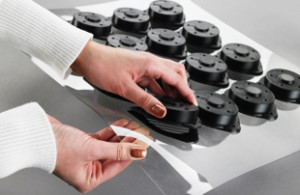Boost your proficiency in Direct Digital Manufacturing design with these tips

As such, this brings us to a very important question, namely, how do we ensure that the DDM technology we possess is fully utilized so that we are able to attain these benefits? The solution is simple; there are various design techniques and factors to consider when making use of Direct Digital Manufacturing and they are as listed below:
1. Prioritize and concentrate on functionality
When designing products using Direct Digital Manufacturing, focus on designing each part in such a way that it contributes to the overall functionality of the product. Disregard any thoughts about the manufacturability of the product as the old rules governing conventional manufacturing methods are no longer applicable. For instance, complex product designs that were once deemed as impossible to execute and produce are now achievable through DDM.
2.Repetition and Refinement
Ever heard of the phrase, ‘Practice makes perfect’? Capitalize on the design flexibility of DDM and continuously update and refine product design until it reaches the optimum state. With no production delays or unexpected supplementary costs to worry about, it is a prime opportunity to be innovative and creative in your product designs while ensuring its functionality.
3.Include plenty of features
Unlike what is practiced in many traditional manufacturing processes, there is no longer a need for a simplified product design as there is no additional cost incurred for each extra feature that is included. As such, do not hesitate on adding as many design features as needed so that the best results can be achieved.
4.Experiment with different types of wall thickness
One wonderful aspect of Direct Digital Manufacturing would be the variability of wall thickness for each product part. With DDM, the wall thickness does not have to be similar and in accordance with the usual manufacturing method(s) requirements. However, it is important to take note of the fact that the design for each part needs to set above the minimum wall thickness in order for it to work effectively.
5.Make use of part consolidation or part segmentation depending on product design needs
Solve the issue of tolerance related design limitations with DDM’s parts consolidation capabilities and do away with the need for assembly, all while enjoying lower manufacturing cost at the same time. Alternatively, DDM also allows for the segmentation of parts according to your product design needs, hence showing its overall adaptability.
6.Implement changes in thought process with regard to past design techniques and practices
Most importantly, it is crucial that you change your mindset about the common manufacturing practices and abandon your past way of thinking. Through DDM, many of the constraints imposed by conventional manufacturing methods are eliminated. For example, as compared to Injection molding, DDM does not require draft angles to be included. Therefore, the product design does not have to be specially customized to accommodate these draft angles and thus allowing more freedom of design.
If you are interested in getting a more comprehensive explanation on the best design techniques for Direct Digital Manufacturing, grab your copy of the white paper here today!
